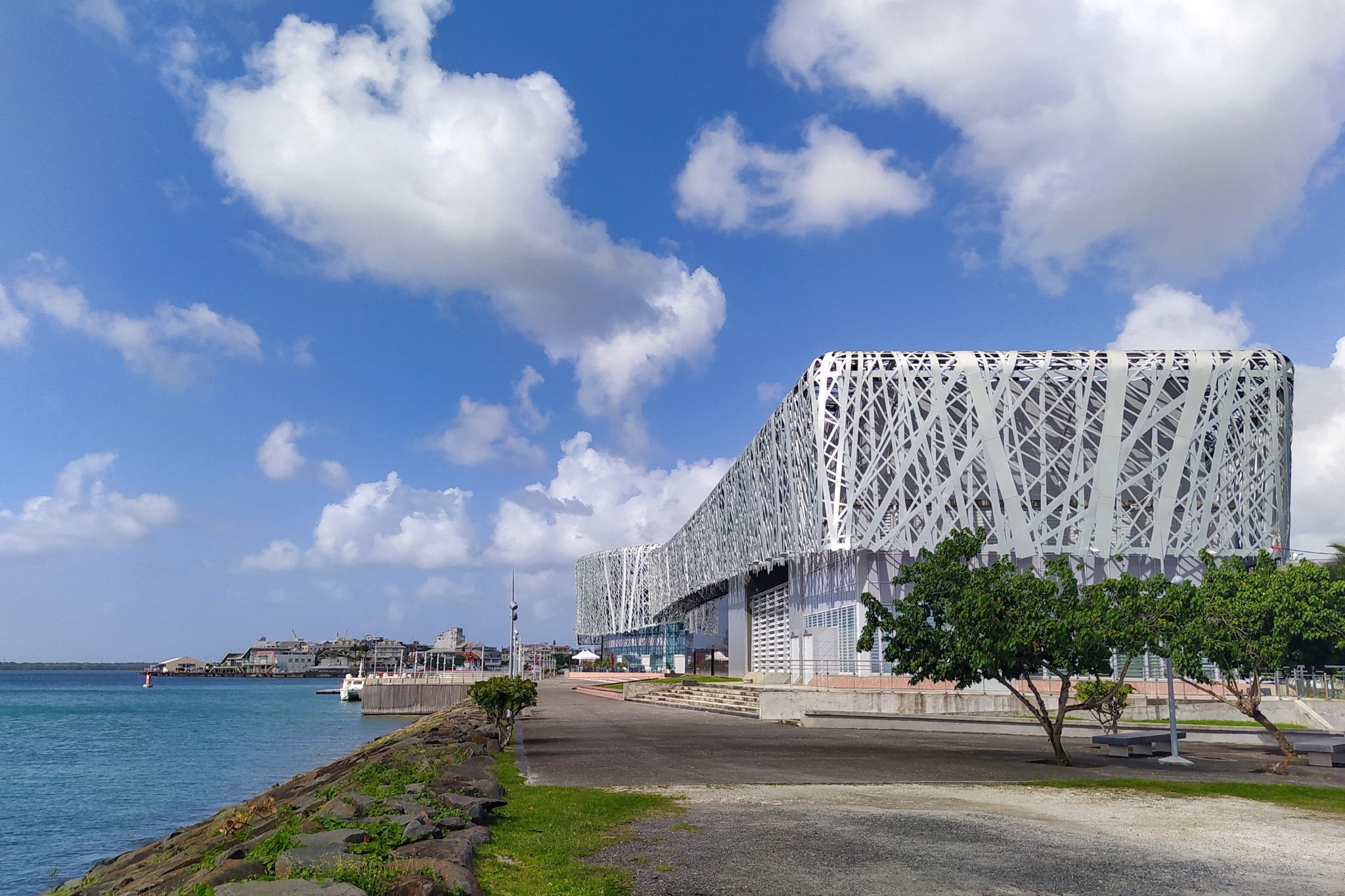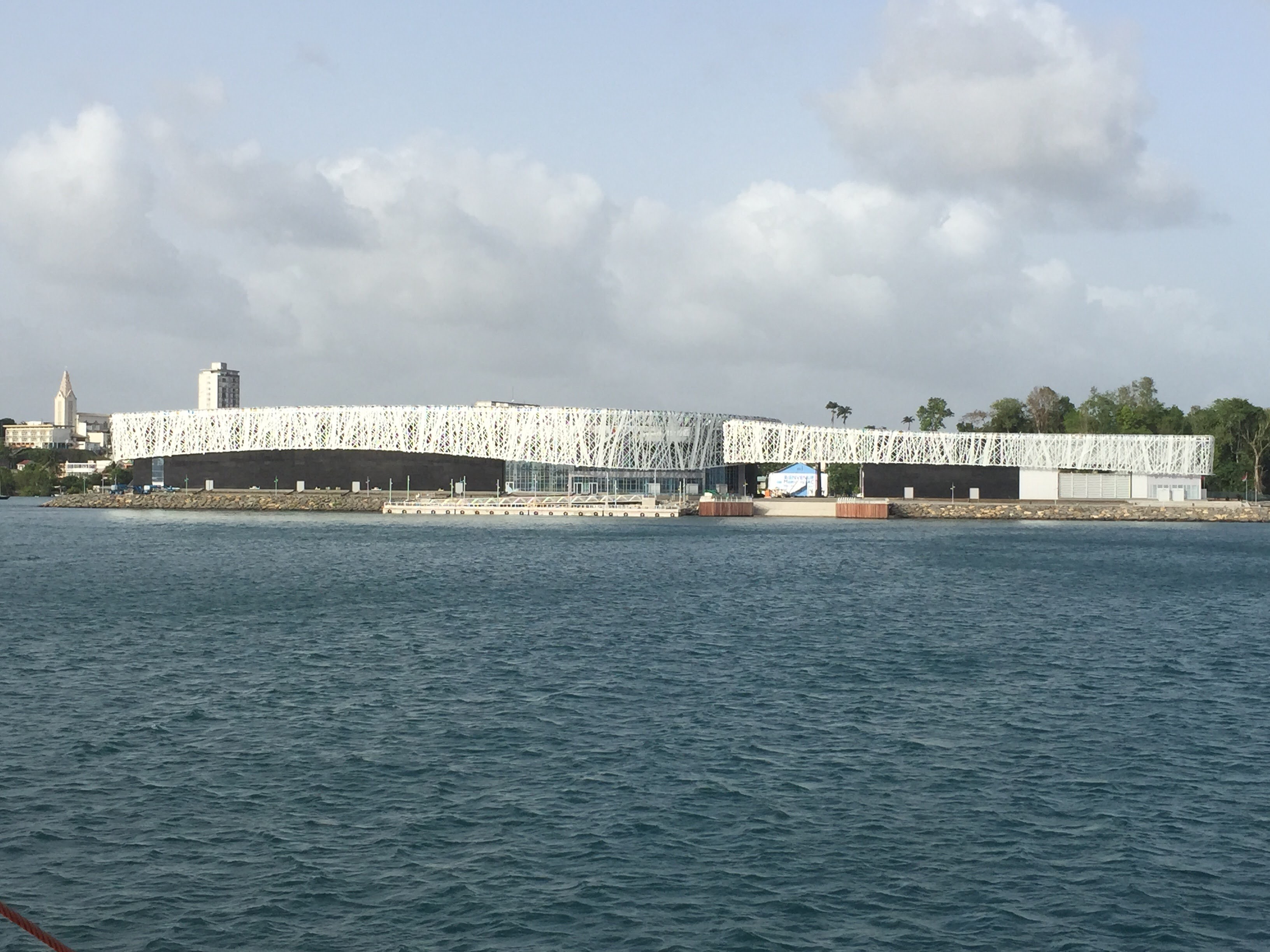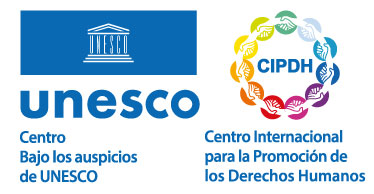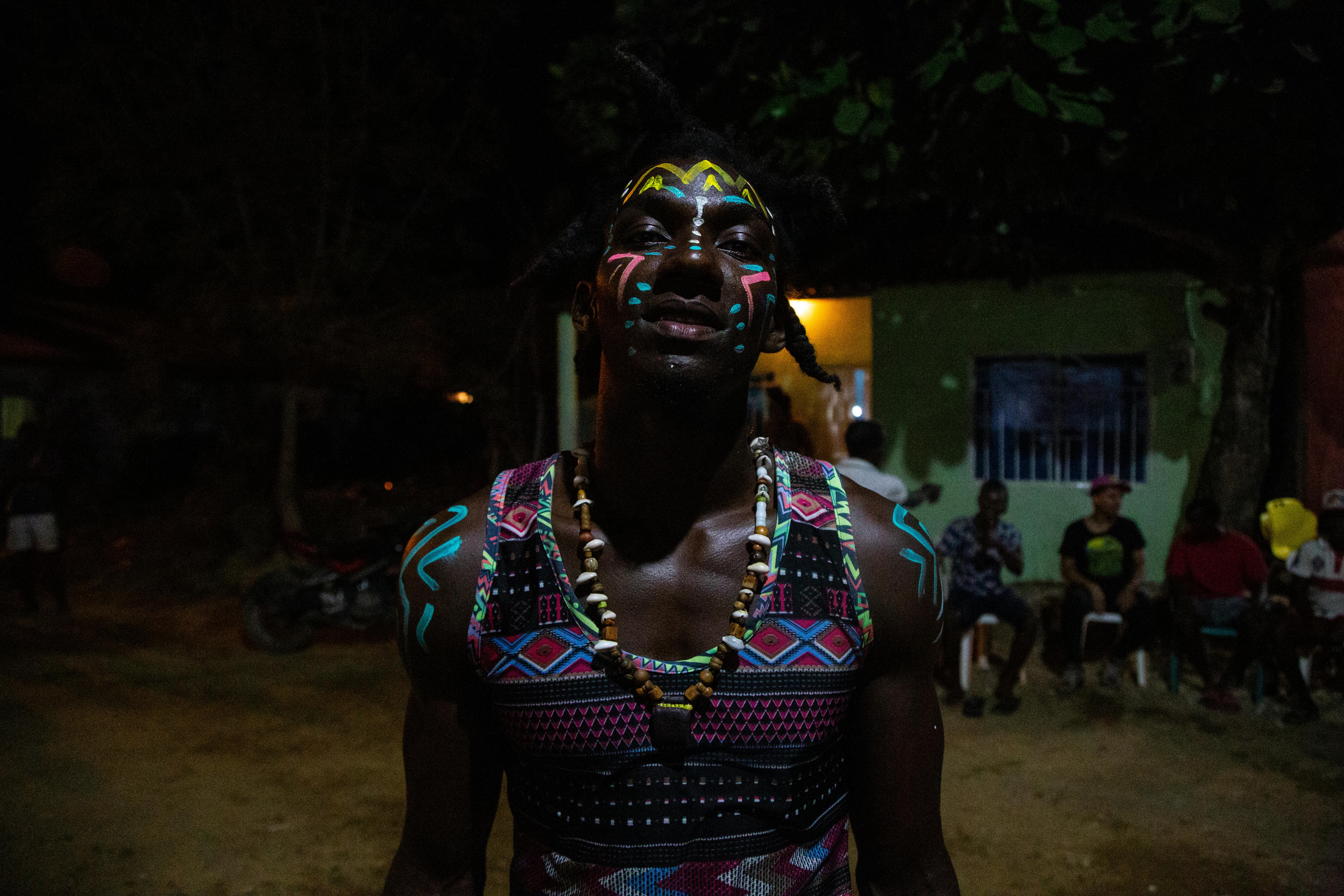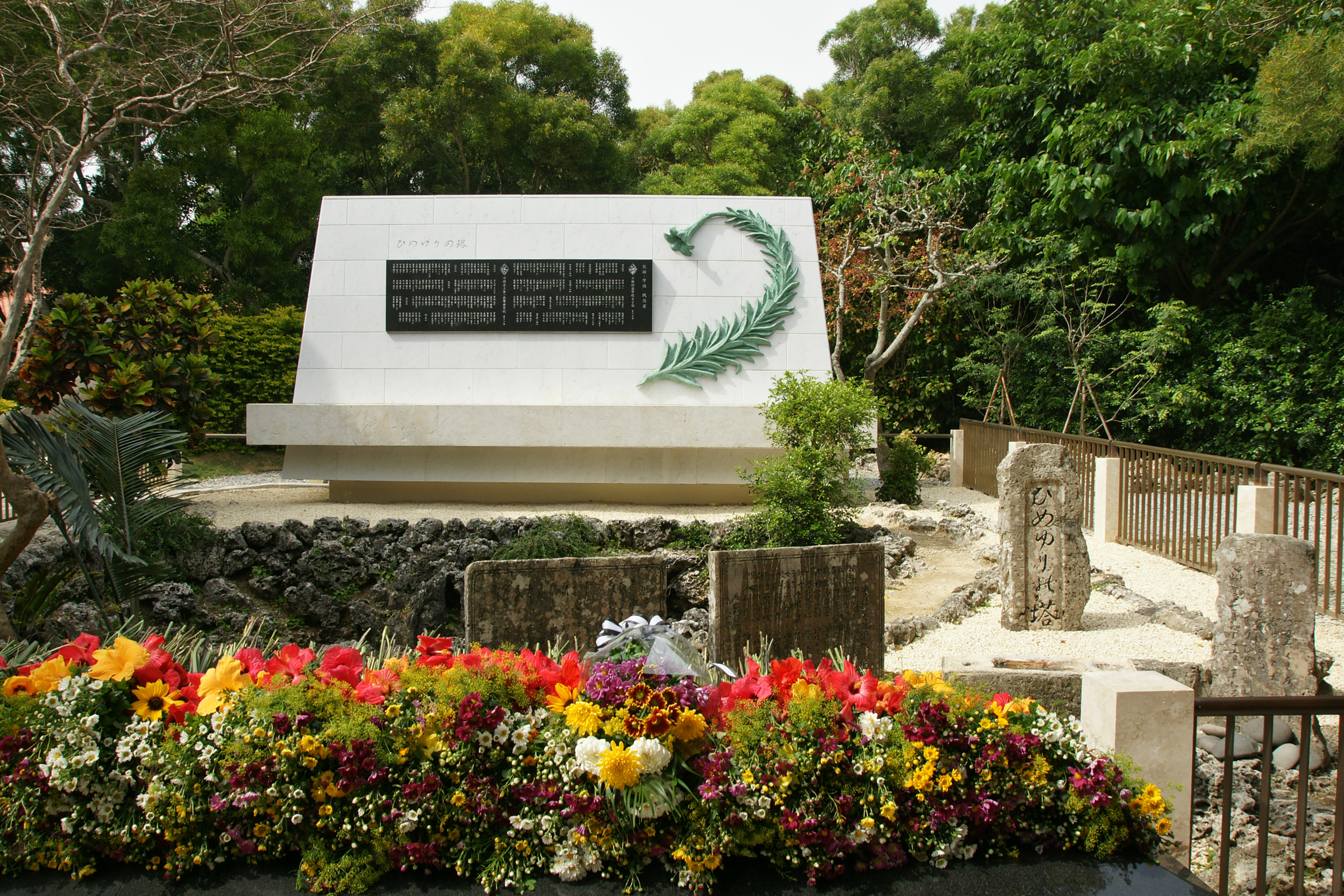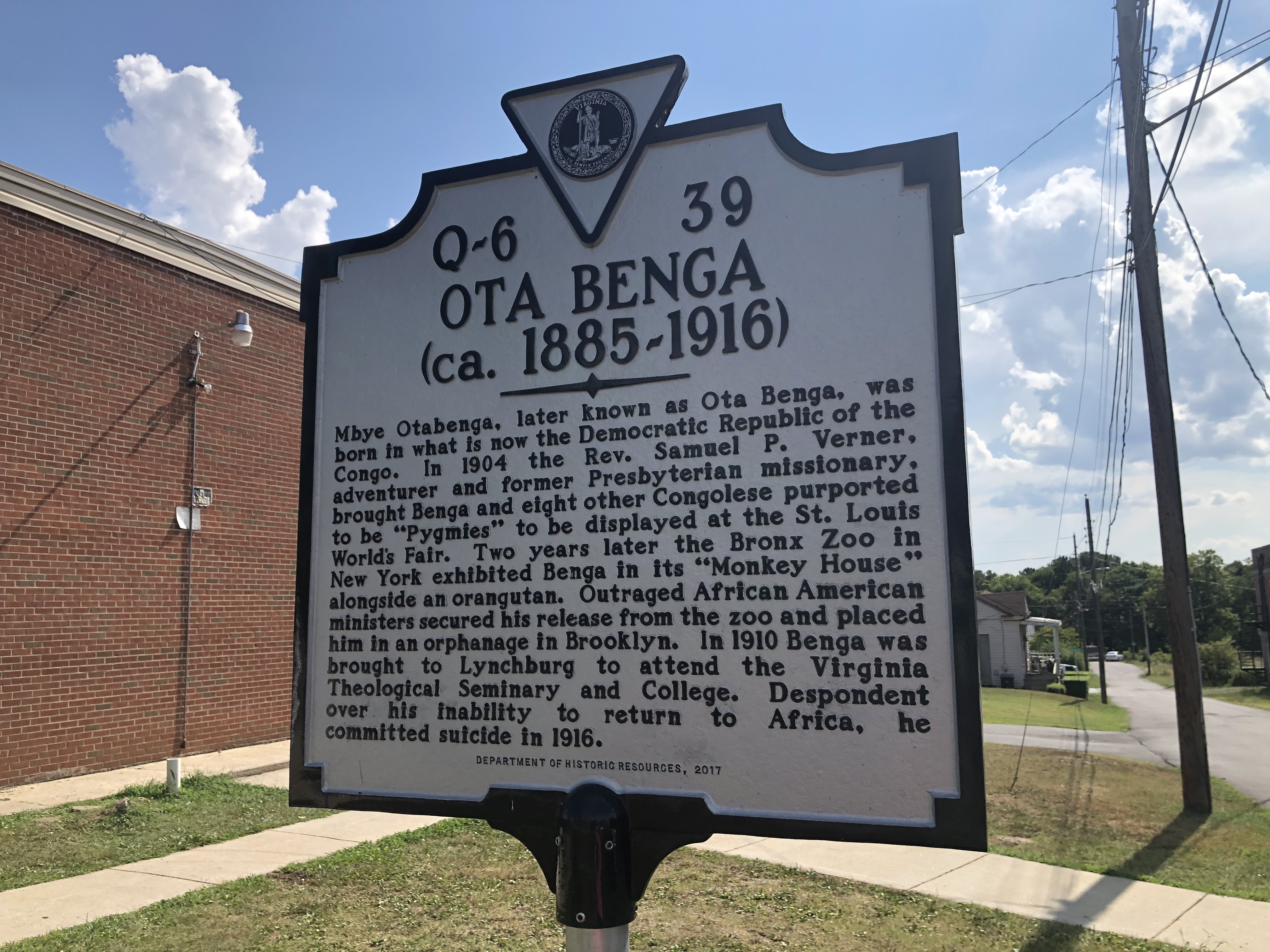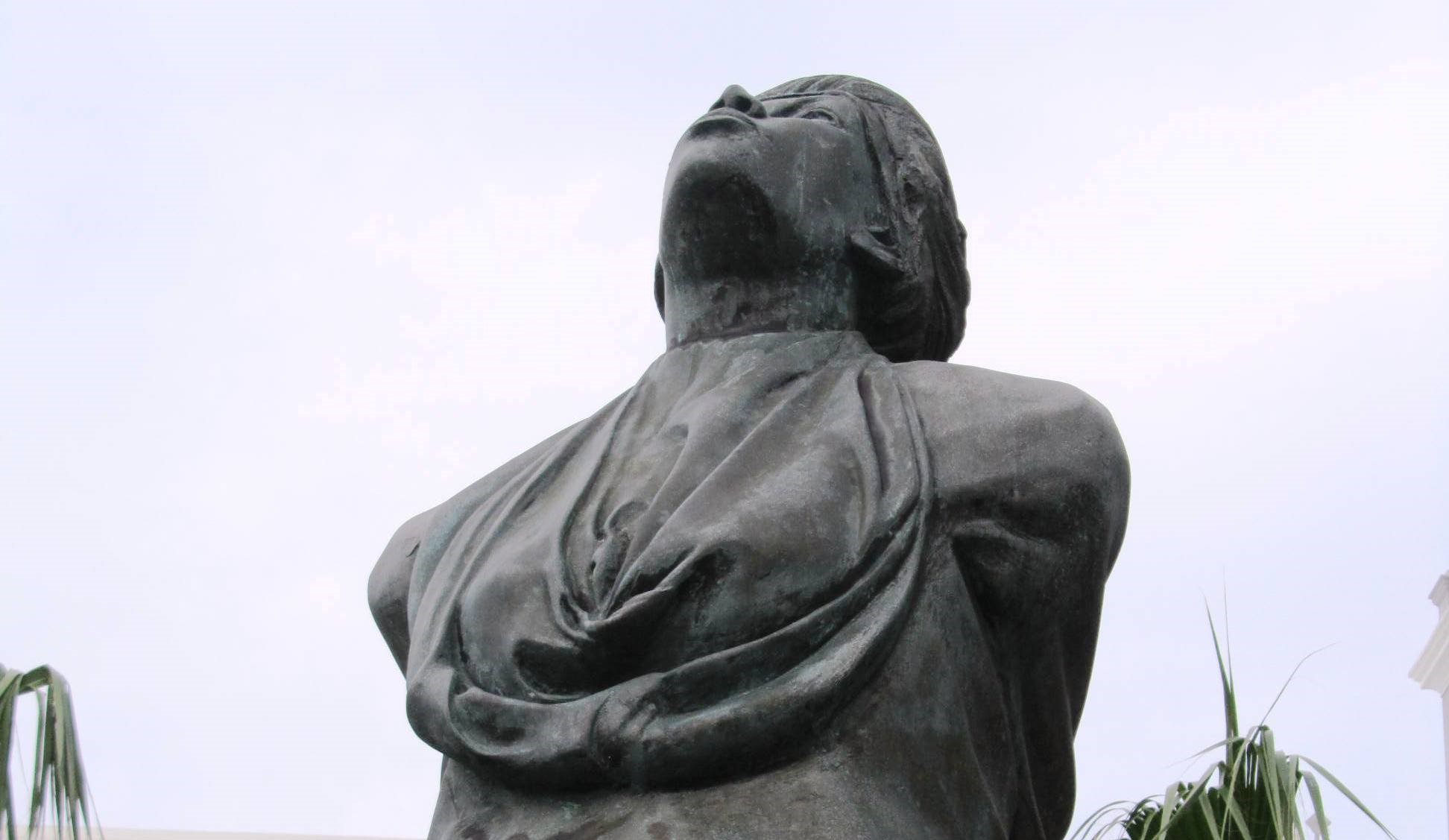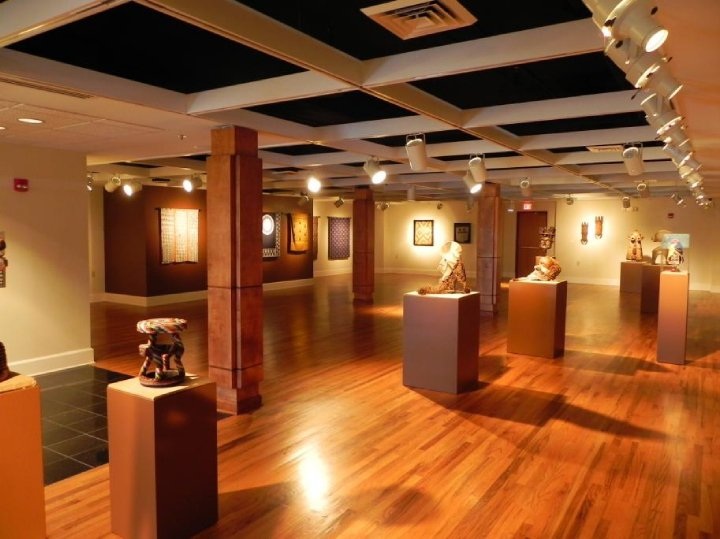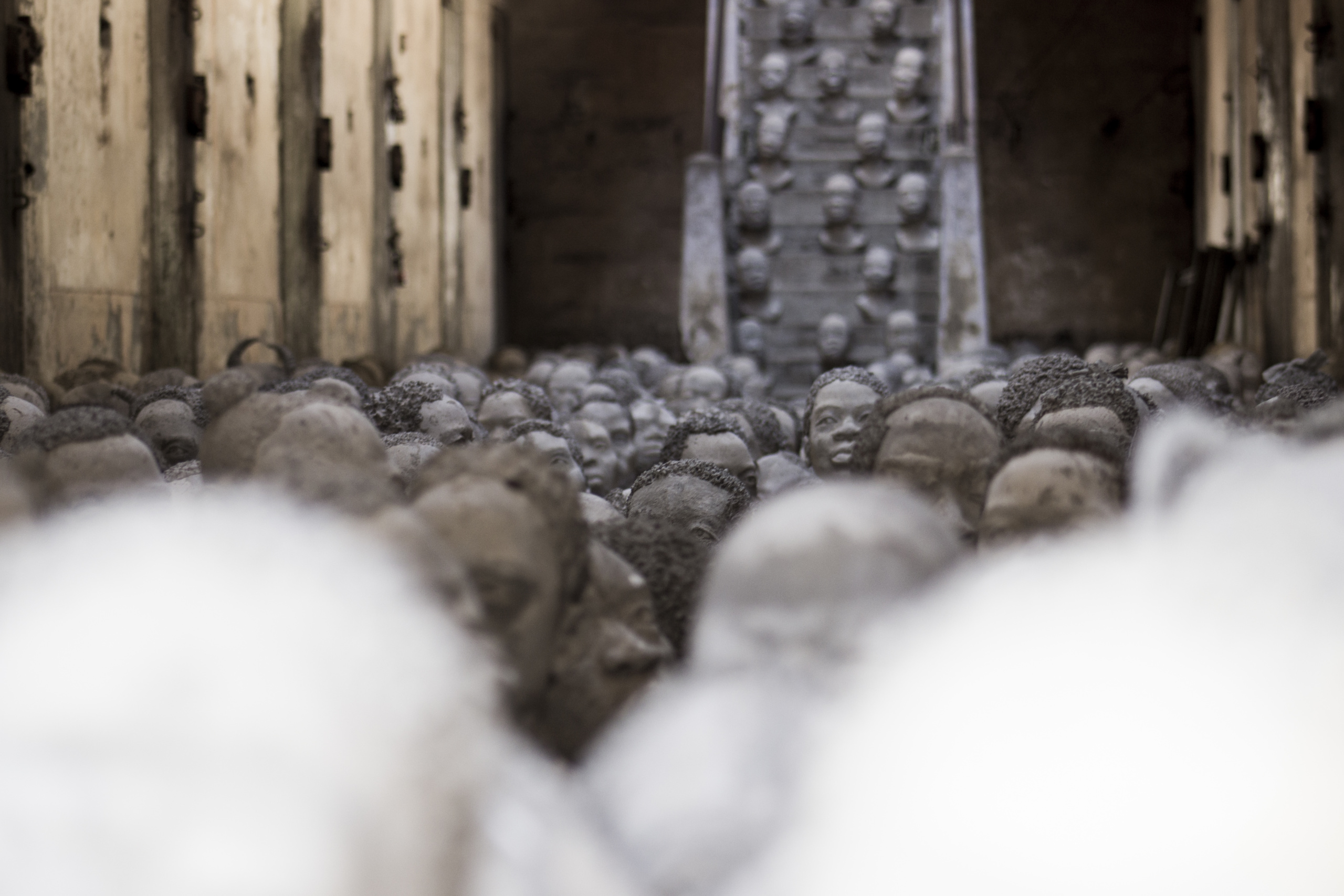ACTe Memorial
Museum
Theme: Slavery

Address
Darboussier 97110
Country
Guadeloupe (France)
City
Pointe-à-Pitre
Continent
America
Theme: Slavery
Purpose of Memory
To commemorate the people who were victims of trafficking and slavery in the Caribbean islands, and to contribute to the construction of a universal memory of trafficking and slavery.
Known Designation
ACTe Memorial
Public Access
Free
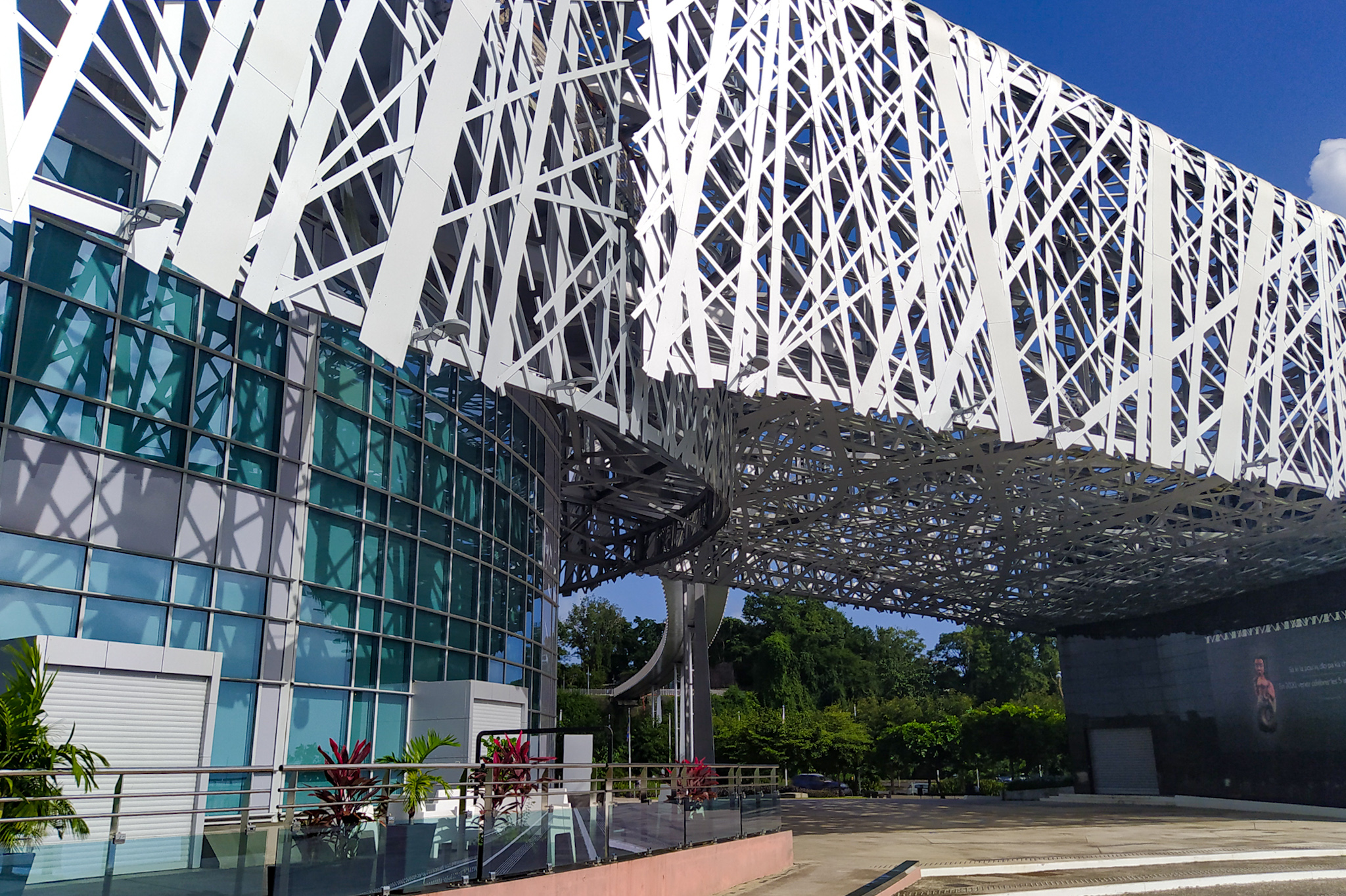
Location description
The ACTe Memorial “Caribbean Center of Expression and Memory of Human Trafficking and Slavery” is located on the coast of Guadeloupe Island, in the space where the old Darboussier sugar factory operated. This was the largest sugar factory in the Antilles during the slave period.
The memorial consists of an imposing elongated building that measures 240 meters and is covered with silver grids that represent the roots of the fig trees that grow on the abandoned buildings. At the entrance is the central patio where a metal monument stands representing a giant tree, which symbolizes the roots of Guadeloupean society. The museum, located inside the building, narrates the history of slavery in the Antilles and in America since the beginning of the 17th century through works of art, heritage pieces, video projections, sound environments and interactive tables that testify to the atrocities produced by slavery and human trafficking.
At the beginning of the 17th century, France conquered the Guadeloupe archipelago, located in the Caribbean Antilles. During the first years, the French Government granted the administration of the territory to the Company of the Islands of America, which was in charge of distributing the lands to the French settlers so that they could develop sugar cane, tobacco and cocoa plantations. In the mid-17th century, thousands of people were transferred to be used as slave labor. Sugar cane production became the predominant crop in the archipelago and the population began to grow as the plantations prospered.
Between 1759 and 1763, as part of the Seven Years’ War, Great Britain occupied Guadeloupe and moved 15,000 people to work as slave labor on plantations. In 1763, the French regained control of the archipelago, which became a strategic territory due to its location and the growth of sugar cane production. The plantation economy, based on slavery, servitude and the exploitation of people, generated large profits for the colonizers. As sugar production grew, more enslaved people moved in from Dutch and French colonies in the Caribbean or on the African continent. In 1790, 90,000 enslaved people lived in Guadeloupe, representing 85% of the total population of the island.
In the context of the French Revolution of 1789, the news of the approval of the Declaration of the Rights of Man and of the Citizen generated revolts in the Antilles that were repressed by local governments. The French republican authorities continued to maintain the legality of slavery in their colonies. On April 20, 1793, a rebellion began in Guadeloupe when hundreds of slaves from various plantations used weapons given to them by monarchist planters to fight against the republicans, killing 23 colonist citizens. Subsequently, the rebel group was imprisoned and the republican authorities reinforced surveillance on the plantations.
At the beginning of 1794 the British invaded Guadeloupe again and in 1802 the troops of General Richepance under the orders of Napoleon Bonaparte, landed on the island, regained control of the territory and maintained the slave system. Slavery was definitively abolished in Guadeloupe in 1848, when the French Second Republic approved the decree abolishing slavery in the French territories and its colonies.
Since 1946, Guadeloupe is part of the French overseas departments. It is governed by two councils, one general and one regional, whose authorities are elected by the Guadeloupean population.
Since the 1960s nationalist groups have developed in the French Antilles, particularly in Guadeloupe, which re-read the island’s history and vindicated the memory of slavery. In 1981, following the victory of the Socialist Party in the presidential elections in France, the Government began to incorporate the memory of slavery into official history. In 1983 it passed the law commemorating the abolition of slavery and in 2001 the French Senate recognized slavery as a crime against humanity.
In Guadeloupe, the International Committee of Black Peoples (CIPN) called for the construction of a space dedicated to resistance against oppression and the struggle for freedom of people who are victims of slavery. On October 26, 2004, the president of the Guadeloupe Regional Council, Victorin Lurel, committed to building the memorial to contribute to the preservation of the collective memory of slavery and encourage research on the slave trade.
In 2005 a scientific council was formed, which was directed by the Martinican historian Jacques Adélaide-Merlande to materialize the construction of a space that would preserve the memory of slavery. At the beginning of 2010 an international competition was held in which four architects from the region were chosen who built the property inspired by the roots of the “cursed higuero”, a tree endemic to the Antilles that destroys abandoned buildings and then conserves and protects its ruins. One of the scientific council’s proposals was to build a museum that would combine expressions of contemporary art with heritage objects and create a space for multiple activities, expressions and approaches that would account for the terrible reality of slavery, helping to preserve memory and build fairer societies.
The construction of the immense black granite building began in March 2013 and included the participation of architects, set designers, historians and artists. The building was covered with black quartz fragments, in homage to millions of victims of slavery, and is connected to a large garden that was intended as a space for meditation while symbolizing the garden of the slave, the only space of freedom granted to them on Sundays. The memorial was inaugurated on May 10, 2015 and the presidents of France, Haiti, Benin, Senegal and Mali were in attendance.
The permanent exhibitions of the museum showcase the history of slavery from an international perspective, narrating the main historical moments of trafficking and slavery in the Antilles and the world from the 17th century to the present. This exhibition area comprises a space of 1,700 m2 that includes six rooms where the different stages that slavery went through are recounted through images, projections, artistic expressions, heritage pieces and contemporary works.
The temporary exhibitions take place in a 700 m2 room, where different shows and activities on trafficking and slavery are held. In addition, works of contemporary art occupy a central place in the museum and invite reflection on the different manifestations of racism.
The space has a theater room, a research center, a collection of public and private archives, and a documentation center open to the public.

